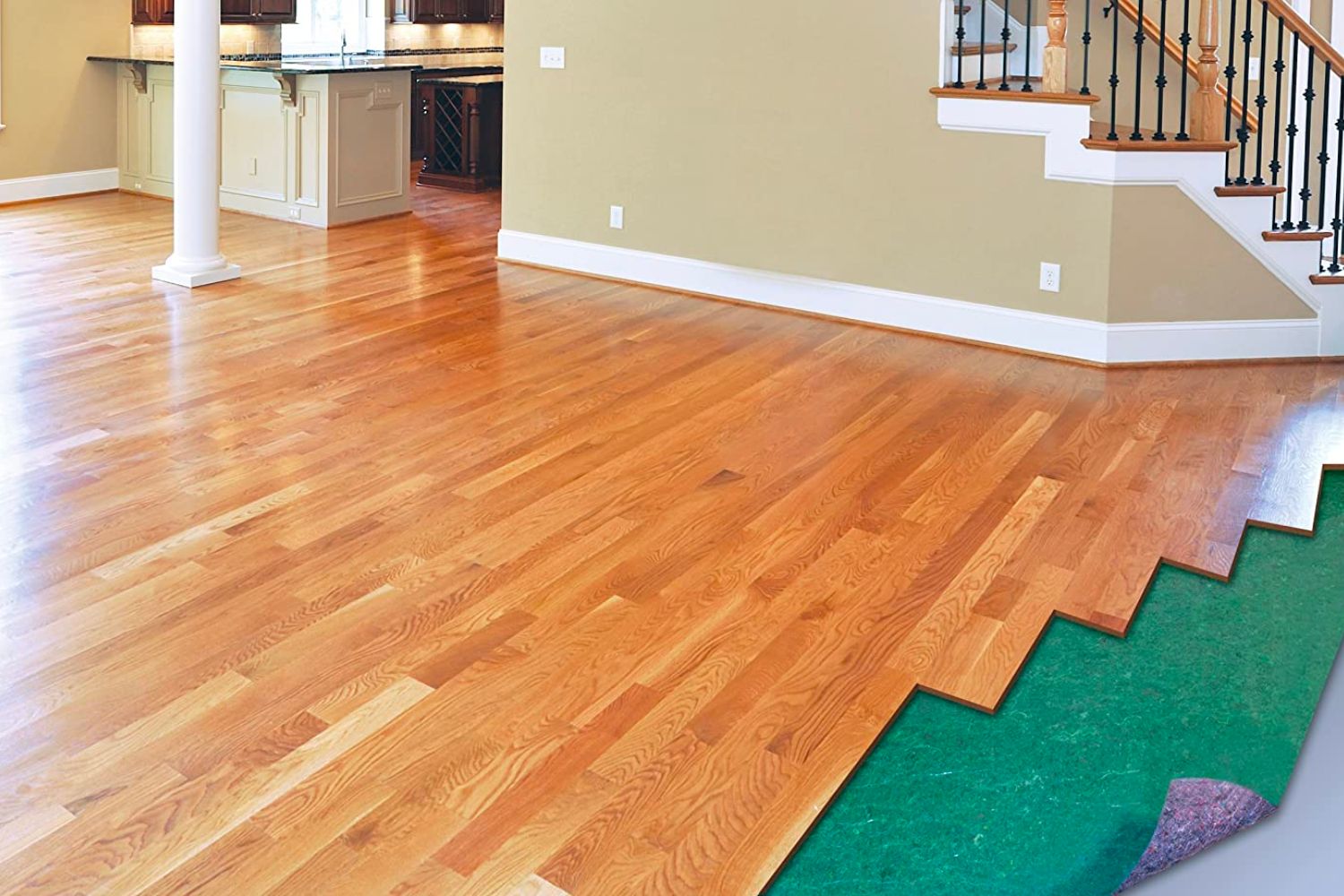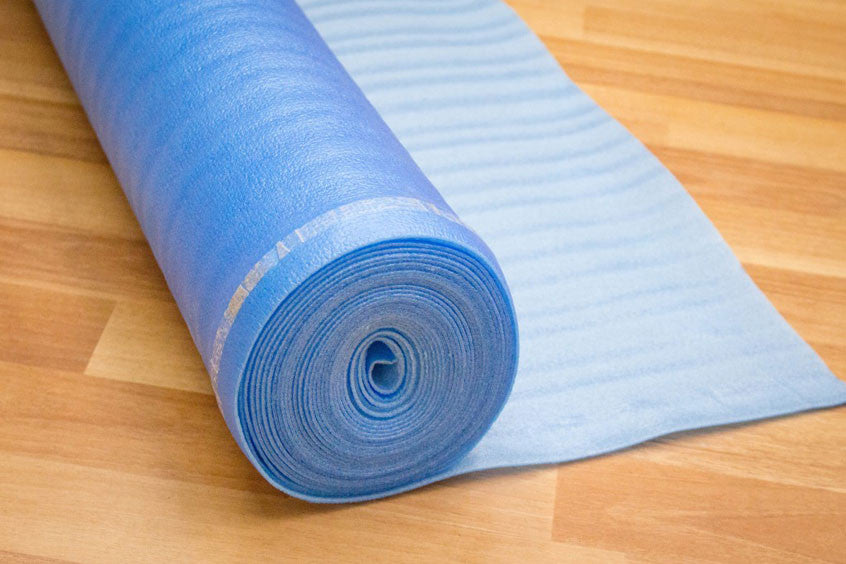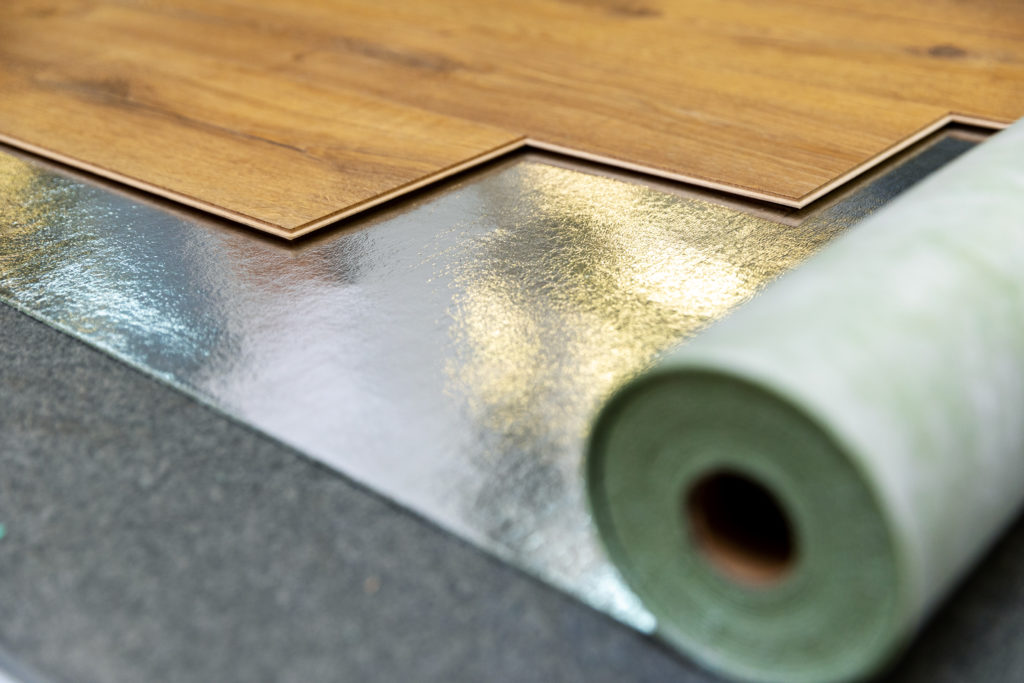There are several components that makeup flooring, including joists, subfloors, underlayments, and finish materials. It is the joists that form the framework of the home, and it is the subfloor, usually plywood, that sits on top of them. Subfloor underlayment is a thin material that is placed over the subfloor prior to the finish flooring material being applied. As well as acting as a moisture barrier, underlayment serves a number of functions, including sound deadening and softening the feel of the floor underfoot.

Photo: BobVila
Which Underlayments Are Commonly Used For Vinyl Flooring & Laminate Floors?
Your subfloor is protected from the finished floor, like vinyl flooring, by an underlayment. Underlayment for laminate and vinyl flooring acts as a thin layer between the two. There are many uses for underlayment for hard surface flooring like laminate, engineered hardwood and vinyl flooring, such as: absorbing sound, controlling moisture, and even making hard floors more comfortable under your feet. The following are some of the most commonly used underlayments for hard surface floors like laminate & vinyl flooring:

Photo: FloorCity
Foam Underlayment For Laminate and Vinyl Flooring
Underlayments made of foam are among the least expensive. Foam is often a good choice if your subfloor is constructed of plywood. It is important, however, to ensure that there are no water issues before proceeding. There is no good mix between foam and water. Underlayment made from foam is a more rigid product for your vinyl flooring that is also filled with air. Generally, foam underlayment is available in rolls and in different widths (dependent on your needs).
Felt Underlayment For Hard Surface Flooring
It is important to note that felt is an excellent underlayment for reducing the noise of vinyl flooring. The density of felt underlayment makes it a better noise muffler than foam for vinyl flooring. Furthermore, it is a pretty good insulator for your vinyl flooring. However, it is quite thin, so it is not often as comfortable.
Cork Underlayment For Vinyl Flooring
A second vinyl flooring underlayment that absorbs sound is cork. This option is suitable if you have a few minor water issues at home, but should not be used if there is a large amount of water present. If there is some mold growing on your floor due to moisture, a great feature of cork is its ability to combat mold and mildew.
Particleboard Underlayment For Flooring
Particleboard may be compared to a cross between foam and wood. You should, however, make sure that you have an excellent subfloor underneath it since this flooring is affordable, but it is also fragile. Particleboard should not be used in areas that are exposed to moisture as it will rot. An underlayment barrier may still recommended in this situation in floating floor applications.
Plywood Underlayment For Flooring
As with particleboard underlayment, plywood underlayment is much stronger and more water-resistant than particleboard. It is, however, necessary to distribute weight evenly above it since it is not capable of carrying a large amount of weight at once. An underlayment barrier may still recommended in this situation in floating floor applications.
Oriented Strand Board Underlayment For Vinyl Flooring
The oriented strand board (OSB) is a material that is similar to plywood but is not quite as durable. OSB easily deteriorates when exposed to moisture, so make sure your subfloor is completely dry before installing it. An underlayment barrier may still recommended in this situation in floating floor applications.
Watch this video to know more:
Sound Rating For Vinyl Flooring and Laminate Flooring Underlayment
Several underlayment products have ratings that indicate their best uses for your vinyl flooring. As a result of this rating, you will be able to ensure that your flooring underlayment performs as expected.
- STC (Sound Transmission Lost Test): A higher STC score indicates that your underlayment will be more effective at absorbing ambient noise (such as talking and music).
- IIC (Impact Sound Transmission Test): Just like with STC, the higher the score, the stronger the underlayment's ability to absorb sound. However, unlike STC, the IIC score takes into account impacts such as footsteps.
- R Value: This rating is based on the insulation properties of an underlayment, specifically its ability to transmit heat. As the score increases, there will be a reduction in heat movement (and a greater degree of insulation).
Other flooring blog articles you may want to read:
FACTORS TO CONSIDER BEFORE INSTALLING VINYL FLOOR
LAMINATE, VINYL, AND ENGINEERED HARDWOOD FLOORING OPTIONS: WHAT MAKES THEM DIFFERENT?
BEST BUY VINYL FLOORING | COMPTON SPC VINYL
CORETEC PLUS LUXURY VINYL PLANK: A VINYL FLOORING OPTION WITH FORM AND FUNCTION
